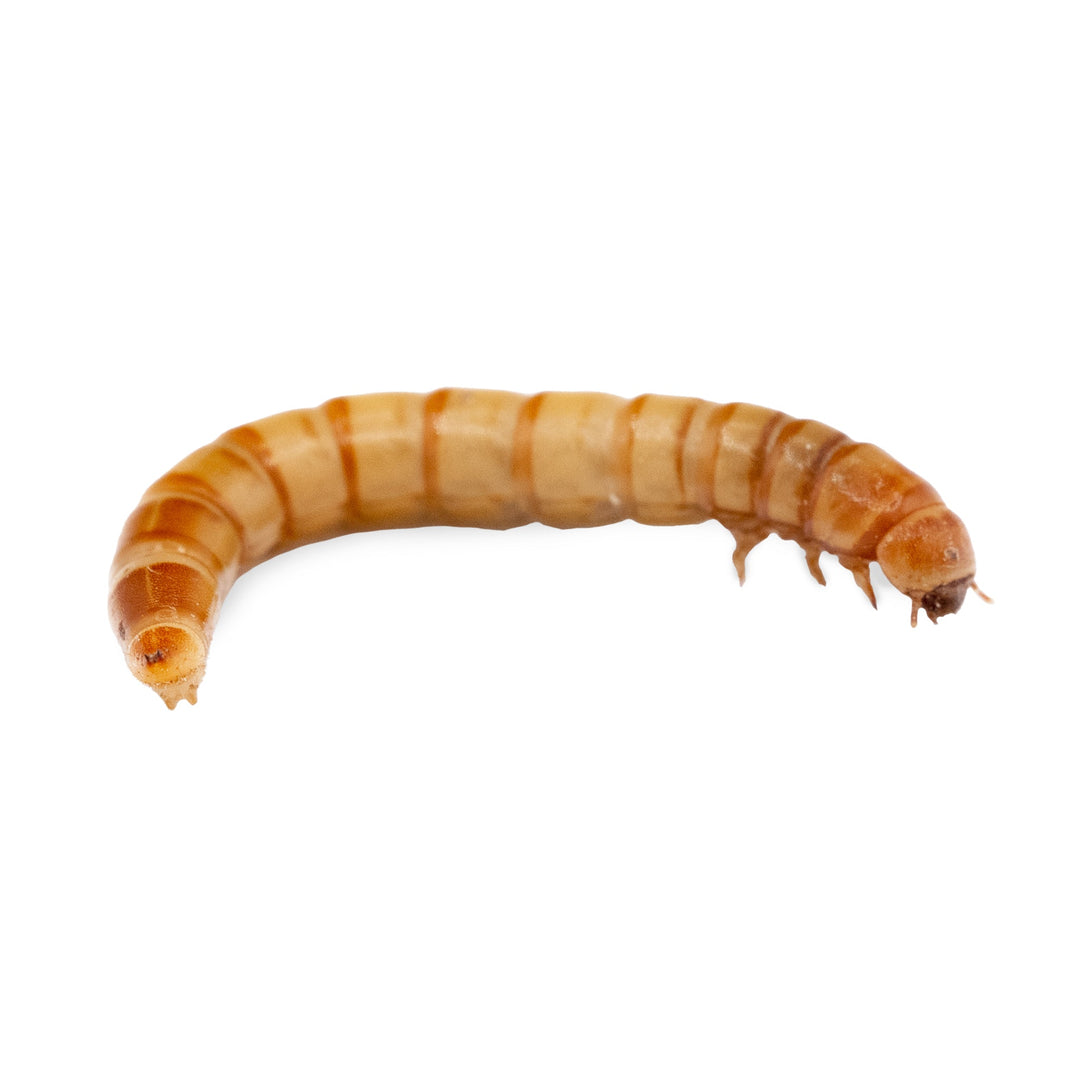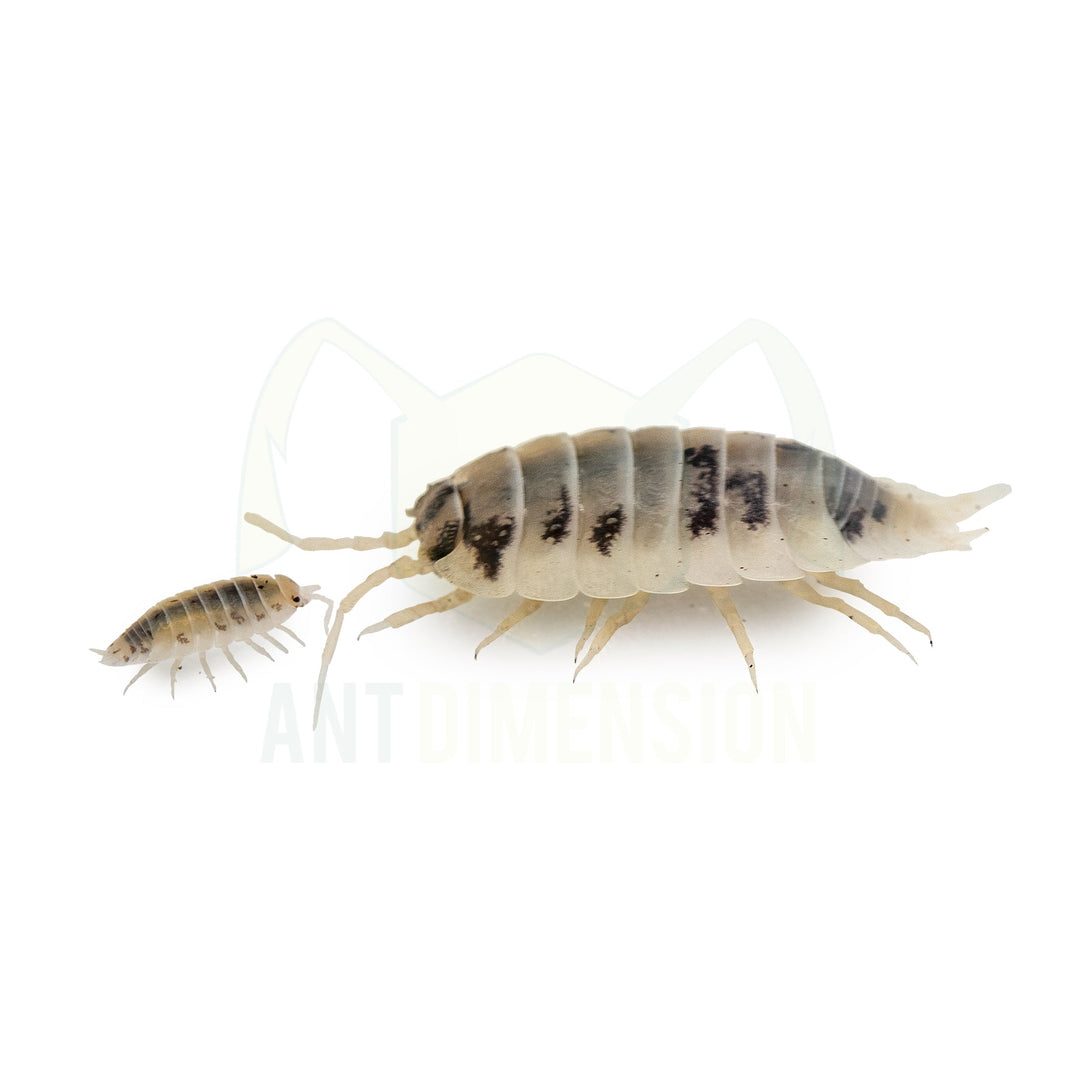10 Vital Tips for Ant Keeping
Introduction
Keeping ants at home is not always an easy task, especially in the foundation stage, as we saw in the previous article. During these more than 5 years in the hobby of ant keeping and thanks to my Youtube channel, I have come across many problems and errors when keeping ants, not only caused by me, but also by my followers or other fellow hobbyists. Many of these problems are usually due to a lack of information or knowledge, which is why I thought of writing an article gathering 10 vital tips for keeping ants, reflecting all the knowledge gathered during this time. What are we waiting for?
Tip #1. Remember that they are living beings.
When we just started in this world and we have our first queen ant, it is easy to fall into constantly looking at her, feeding her, seeing if she has eggs or watching her come out of the tube through the walls like Harry Potter.
You have to remember that they are living beings, and that one of the things that hurts them the most is stress. The fact of simply looking at her, if the queen gets upset or simply realizes that something is not right, that she is not in her little hole of hers totally in the dark and safe, we will already be stressing her.
For this reason, it is important to give the time and tranquility that this queen ant needs to carry out its first generation of workers. This means that when it arrives, check that the test tube is in perfect condition, that there is enough water to set it aside and leave it in a dark place, without vibrations and without looking at it for at least 4 weeks. You are not going to miss anything, the fun thing is when you have a stable colony, at that time you will be able to see them more often, as long as you do not stress them every time.
How can we know if she is stressed?
This is very simple, there are several behaviors and effects that can be caused by stress:
- The queen does not stay still, she is constantly moving.
- Some species tense their antennae when they perceive something, being on guard or defensive is also stressful.
- Does not lay eggs or eat them. It is even capable of eating the larvae and pupae.
Tip #2. Watch the diet.
Whether they are small colonies or super colonies capable of destroying an entire country, it is important to give our colony a correct diet, based on the species, its size and the number of larvae they have.
We can separate the diet into three well differentiated parts; water, carbohydrates and protein.
Water
Water is an essential nutrient for humans and also for ants, and many of the causes of death in a colony are due to a deficiency of this nutrient. I think it is not necessary for me to tell you where to get the water, since if so you would not be reading this. So I'm going to explain how we provide it to the colony.
There are several ways to provide water to an ant colony, depending on their size and where they live. For example, in a test tube we will provide it with microdrops or with cotton, while in a formicarium that has an outworld we will put liquid feeders and/or test tubes filled with water.
Leave the colony a couple of days without water, and there will be no more colony. For this reason, at Ant Dimension we have developed our HydroX humidity system, which at the same time serves as a drinking fountain and ensures that the colony always has accessible water. This humidity system is integrated into many of our formicariums.
Carbohydrates
We move on to the sweet dish, the carbohydrates, which we could say are the energy of our ants, without energy they will not be able to do the necessary tasks to maintain the colony.
There are many ways to give carbohydrates, such as sugar water, we all have it at home and it is very cheap, the downside is that we cannot safely put it in liquid feeders, since it ends up crystallizing.
If you want a way to provide carbohydrates in liquid feeders so that they always have it accessible, byFormica has been marketing its Sunburst Ant Nectar, a nectar made for ants for years, and the truth is... they love it. In addition, the liquid feeders are also from byFormica and this nectar works great with them.
There is also the totally inadvisable alternative of using honey water, since honey goes bad quickly and it is believed that they can carry parasites that cause problems for ants.
Then we have other species that are capable of obtaining carbohydrates from other foods, for example granivorous species such as Messor barbarus. Granivorous species are primarily seed feeders, even for protein, so giving a good mix of seeds high in carbohydrates and protein is a very good idea.
Proteins
Let us not forget what allows the colony to grow: proteins. This nutrient is not consumed by the workers, but is given to the queen to lay eggs and to the larvae to develop. That is the reason for taking into account the number of larvae in the colony, it will be useless to give 10 kilos of cockroaches to a colony of one million workers if there are only 100 larvae afterwards. The food must be proportional, you have to look at the conditions in which the colony is, we will increase in times with many larvae and we will decrease when there are few.
The most recommended way to give proteins is through insects; Worms, fruit flies, runner cockroaches. There are many live food stores that have a large catalog at an affordable price. Artroposfera and Reptilhouse are our favorites.
Never give insects from nature as they could carry diseases, mites, or even pesticides.
Tip #3. Size Matters.
When moving our colony to a formicarium, we must pay close attention that it can meet the humidity requirements of the colony and above all that it IS NOT TOO BIG. I don't know anyone who hasn't sinned about this, and in the end we all do it, we take our small colony of Messor barbarus and we put it in a 20x10cm formicarium, at this moment an F would come.
That a colony has excessive space is one of the main causes of slow development and death of the colonies, committed by practically everyone and vaguely avoided by many stores, because well, bigger formicariums more money.
Gallery dividers are a trap
It is easy to fall into the belief that a 20x10cm is not very large for my colony of 20 Messor barbarus workers because... it has gallery dividers. I honestly don't know how many times I've come across that comment. Gallery dividers only cause more confusion and misperception of space in a formicarium, making new keepers think the space is perfect for them, even though they have 3 galleries and only take up 1/4 of a gallery.
The 40% rule
As a general rule, I like to apply the following: a formiacrium is suitable for an ant colony as long as it occupies at least 40% of the formicarium. Of course, it is a generalization, since the species and the design of the formicarium also come into play in terms of the routing between the chambers.
Modulars are your friends
With traditional formicariums, we must constantly move them as the colony grows, so in most cases it is advisable to give your ants a setup that has a modular system.
The modular system allows to form giant formicariums and with greater control over humidity and routing using small modules with different functions. In this way you manage not to move, but to expand the space available to your ants in a more precise way. At Ant Dimension we have a wide variety of modules capable of fulfilling different functions (formicarium, outworld, humidity, transport, etc.) to guarantee a correct expansion and conditions of your ant colony.
Tip #4. Don't let the first workers die.
As we always say, the foundation stage is the most critical moment of a colony, when any mistake can lead to the end of the ants. If our queen manages to survive to get her first workers out of her, let's not sing victory, because now comes a critical phase for the colony.
The first workers of the queen are not normal, they are called "Nanitics", and they are smaller and weaker workers of fast development. This is so since the queen must make the most of her nutrients, and producing normal workers could lead to a deficit of these nutrients and kill off the queen.
These nanitics will also die earlier, since their sole purpose is to take care of the new eggs that the queen lays, which will be normal workers. At this time the queen lacks energy and she will have lost much of her mass in developing these nurses, so she needs to rest.
Once we have our nanitics, let's not get excited, no food for the first few days, in claustral species as a general rule we will wait 3 to 10 days from the first nanitic to give food. It is better to wait a bit until the first nanitic are well hardened.
Liquid food like honey or sugar water in a test tube could cause a fatal drowning for a weak and unhardened nanitic. In my case I recommend waiting until you see the nanititcs try to come out of the test tube, or in case of using our Colony Starter Kit, when they wander around the outworld.
To feed the colony, we will place the food in the test or outworld tube. If we use a test tube, it is a good idea to place it inside a tupper or outworld to facilitate feeding. If you do this, it provides the colony with a little substrate since they probably want to close the entrance for greater security.
When the nanititcs feed, they will return with the queen and larvae to feed them. It is very important that you always remove leftover food after a day or two, as it can cause mold and mite outbreaks.
Speaking of mold, this is another problem that is likely to arise with your first few nanitics if you are raising them in a test tube.
Sometimes the cotton in contact with the water in the test tube dries out or becomes moldy. Although ants are naturally capable of
Managing the presence of mold in your nests, a massive outbreak of mold can pose a very serious threat to your queen and nurses. When a mold outbreak begins, moving the colony to another test tube configuration is a must, one way to do this is to glue two sets of test tubes together. One thing to keep in mind is that they may move out immediately, after a few hours, or in a couple of weeks.
Some colonies are stubborn and utterly insistent on staying put even when mold has begun to visibly dominate your test tube. The same is true for colonies living in test tubes that have dried out.
Moving will be easier if the queen already has workers, as they tend to be quicker to make sure the colony moves to more suitable areas.
Tip #5. Find out very well about the species.
Not all species require the same care, even some cannot be raised in conventional formicariums or have never been able to be kept directly in captivity.
Investigating and learning about the species you want is essential, as it will help you get an idea of its diet, environmental conditions, and habitat.
Let's say we want to take care of a Messor barbarus, the most bred species in Spain and about which we can find extensive information. We could make a small table and fill it in based on what we are investigating.
| Specie | Messor barbarus |
| Feeding |
Mainly granivorous, so a diet of mixed seeds, especially chia, flax and poppy. Insects for an extra protein (optional since the previous seeds have a lot), small runner cockroaches and worms are good options. They make a lot of use of water, most problems in captive colonies are caused by water deficits. |
| Environmental conditions |
They have a very wide range of humidity, they can develop correctly in dry or humid environments. They support high temperatures, but it is convenient to keep them between 25 and 30 during their laying season. They perform brumation during the winter months, they have a very marked biological clock, so keeping them at a high temperature during the winter will not cause them to lay eggs. |
| Habitat | They do not need formicariums with a humidity system, although it is recommended due to their constant need for water. They are very destructive, and any material they can break, they will; avoid YTONG, plaster, cork and wood. |
| Things to keep in mind |
They have a very high foraging activity, so they will need larger spaces to forage. They cannot go through the mineral oil anti-escape liquid. They are prone to white mites from the seeds and the high organic debris they leave in the trash. |
To obtain information on a species you can use pages like AntWiki, Wikipedia, forums and, most recommended, ant keeper communities.
And if you are taking care of your ants in our formicariums or you are thinking about it, we leave you our Telegram Community.
Tip #6. Be aware of what is coming.
A well-cared for ant colony will soon grow exponentially, and before getting a queen ant, you should know if you will be able to take care of it when that colony has 500, 1,000 or 10,000 workers, since most species will not be able to be released into the wild, and the ones you can, will not survive.
It is true that you can manage to control the population by reducing the amount of protein that you give, but this is something complex and that can end the colony if it is not managed correctly.
For this reason, the previous point is important, to investigate the species, to know how many individuals it can grow to and be sure that you will be able to keep it, not only when it arrives, but also when it grows.
Tip #7. Step by step.
Start small, don't get excited by catching 5 different species. It is best to start with a single colony of the species that is usually raised to start the hobby in the country where you are. For example, in Spain we would put the Messor barbarus. Once we have learned more about the ants and we have a stable colony, we can dare with a species with different care, for example a Crematogaster, Camponotus or Lasius. If you don't know which species to start with, the community can help you with that.
Tip #8. Avoid compulsive purchases and think about it.
Currently in Spain you can find a large number of stores, each one with its own formicariums with its advantages and disadvantages, unfortunately some of these make use of compulsive buying to sell as much as possible regardless of the safety of the ants, here it comes again In the community, join groups that have a lot of keepers and are not controlled by a store to get more objective recommendations.
If you cannot join a community, make a list of all the stores in your country, in Spain we could put the main ones; Ant Dimension, Ant House, Antling, MyAnthill and AntMaze. Investigate all their formicariums well together with the table you made in point 5, take it easy, because the life of your ants is at stake.
You can also use the customer service of the stores, although this is a bit more risky since not all of them are objective. At Ant Dimension we have a chat and we are always as transparent as possible, with formicariums tested on species from all over the world, easy to show you if your species will be fine in our formicariums.
What we most recommend you review is the following:
- Humidity system: Is the humidity system suitable for your species? Does allow ants to drink? Can it be damaged, how do you change it?
- Design and routing of chambers: Are the chambers suitable for that species? Does the routing provide a correct flow to the colony and does it provide security to the "deep" chambers?
- Connection system: Does it allow you to simply add nests as the colony grows? Can connected formicariums be lifted without danger of coming loose?
- Anti-stress system: Do they include red lid? Do they include anti-vibration feet?
- Material: Is the material suitable for the species? Does it react well to humidity needs? Are the ants able to pierce it?
- Anti-escape: Will the species be able to escape from the formicarium?
Tip #9. Get your ants from trusted sites.
If you can't get your queen ant on the nuptial flights, you'll have to do it with the community or in stores. For the last two, make sure that they are trusted people and stores, and that the ants will always be in good condition, including during transport. For this we trust the stores that sell the ants, as as a general rule they will keep and ship the ants in better conditions than the stores that offer them for free.
Unfortunately, not all ants arrive alive or last a long time due to a shipment in poor condition, so it is important that you ask the community so that the keepers themselves can tell you about their experiences with certain people or stores.
Tip #10. The community is with you.
If something surprises us about the ant hobby is its community, most of the groups we have tested have a very low level of toxicity and are always happy to help you. You can find communities on Facebook, Whatsapp, Telegram, Discord... there is everything.
Again, unless you use their products, avoid entering communities controlled by stores, as they may not give you objective recommendations.
Conclusion
These 10 tips will help you get started in the ant keeping hobby, or even those of you who are already keepers. If we want something at Ant Dimension, it is to promote the keeping of ants in a responsible and safe way for both the keeper and the ants.
Would you add another tip? Leave it in the comments :)




